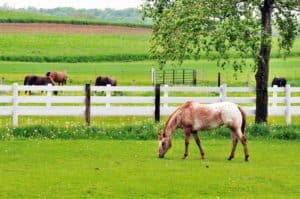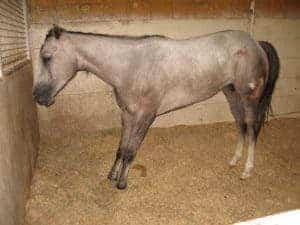
Exploring Blood Biomarkers for Diagnosing Equine Asthma
If developed, an economical and relatively easy-to-perform stallside test could help veterinarians better identify asthmatic horses and provide an alternative to bronchoalveolar lavage.


If developed, an economical and relatively easy-to-perform stallside test could help veterinarians better identify asthmatic horses and provide an alternative to bronchoalveolar lavage.

British researchers found sport horses and those with higher adoption fees found homes most quickly.

While largely considered eradicated in domestic horses, researchers found that most feral horses tested positive for the internal parasite.

PHF is a serious disease in horses and expensive to treat, say veterinarians. Find out your options.

An SAA test can identify illness in horses, and it can also ensure they’re healthy enough for other procedures, such as surgery. Here’s a look into how some vets use SAA in their practices.

Equine influenza is one of the most contagious and costly diseases. As such, preventing its spread in the first place is the easiest course of action.

They might be small, but these flying fiends can spread some deadly diseases.

Researchers and veterinarians around the world strive to learn more about the lamellae and have made scientific advances in laminitis diagnosis, treatment, and prevention over the past several years. Here’s what we know.

Experts share information about the steps needed to identify PSSM, how to distinguish between the types, and recommendations for managing affected horses.

The name might sound romantic, but in reality kissing spines often cause heartbreak and bring nothing but pain. Find out if this condition is the cause of your horse’s back pain or poor performance.

With an estimated 88% of horses over 20 years of age diagnosed with dental disease, veterinarians must be sure to maintain these patients differently than their younger counterparts.

Multiple hoof-related factors can affect a horse’s performance—including balance, trim, shoes, pads, support materials, and more. Here’s how farriers can help a horse reach his potential.

The earlier a veterinarian can intervene and begin treatment in a laminitic case, the greater chances of success, which could mean saving the horse’s life.

Recognizing and treating club feet in young horses can help them succeed in their intended discipline and, ultimately, prevent lifelong hoof complications.

A systematic approach to examining the equine foot can help veterinarians identify causes of lameness more quickly and accurately.

The transitional period between anestrus and estrus is officially complete once a mare has had her first heat of the year. Getting some mares to this point, however, and deciding when to breed them can be tricky.
Stay on top of the most recent Horse Health news with